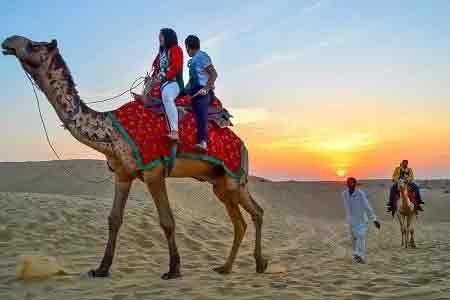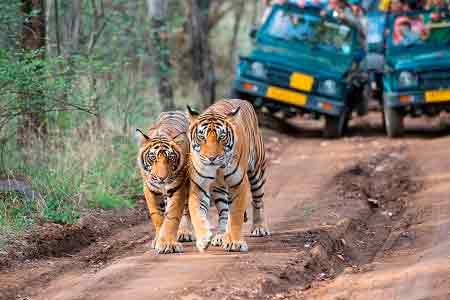

Chittorgarh About this sound pronunciation is a city and a municipality in Rajasthan state of western India. It lies on the Berach River, a tributary of the Banas, and is the administrative headquarters of Chittorgarh District and a former capital of the Sisodia Rajput Dynasty of Mewar. The city of Chittaurgarh is located on the banks of river Gambhiri and Berach.
Chittorgarh is home to the Chittor Fort, the largest fort in India and Asia. It was the site of three major sieges (1303, 1535, and 1567–1568) by Muslim invaders, and its Hindu rulers fought fiercely to maintain their independence. On more than one occasion, when faced with a certain defeat, the men fought to death while the women committed suicide by jauhar (mass self-immolation). Chittor also has been a land of worship for Meera.
Chittorgarh Fort
While it is difficult to arrive at the exact date the fort was established, legend has it that the construction of the Chittorgarh Fort was initiated by Bhim, a Pandava hero from the mythological epic Mahabharata. The fort houses several magnificent monuments, some unfortunately ravaged by time.
Rani Padmini Palace
This palace plays an important role in Rajput history. The structure is built on the banks of a lotus pool and has a pavilion that provides privacy for the women of the royal family. Ala-ud-din Khilji, then Sultan of Delhi, spotted Queen Padmini’s reflection in the pool and was so besotted by her beauty that he led his forces in battle to abduct her.
Vijaya Stambha
Vijay Stambh (the Tower of Victory) was built by Maharana Kumbha between 1440 AD and 1448 AD to immortalise his triumph of defeating the Muslim rulers of Malwa and Gujarat. Built partly from red sandstone and partly white marble, this architectural wonder is nine-storey tower decorated with detailed sculptures of Hindu gods and goddesses. Narrow steps lead to the terrace where one can catch a spectacular view of the entire town from the balconies.
Kirti Stambha
This Tower of Fame is dedicated to Adinathji, the 1st Jain Tirthankara (great teacher). Adorned by the figures of the Digambars (Jain monks), this seven-storied tower was built by a wealthy Jain merchant in 12th century AD.
Kalika Mata Temple
Built in 8th century AD, this ancient structure was initially constructed to worship the sun god. In the 14th century, the temple was dedicated to Goddess Kali, the symbol of power and valour.
Tulja Bhavani Temple
Tulja Bhavani temple, an architectural wonder, is a Hindu temple of the goddess Durga, built in the 16th century by Banvir. Legend says that it is named after Banvir who donated various ornaments (Tula Dan) equaling his weight for relief funds.
Ratan Singh Palace
The winter palace of the royal family, it overlooks a small lake. Although fairly rundown now, it is an interesting place to explore and attracts many tourists.
Rana Kumbha Palace
A ruined edifice of great historical and architectural interest, this is one of the most massive monuments in the Fort of Chittor. The palace is believed to have underground cellars where Rani Padmini and other women committed ‘Jauhar’ (self-immolation).
Meera Bai Temple
Meerabai, an ardent devotee of Lord Krishna’s, worshipped him at this temple. The structure is designed in the classic North Indian style of temples. It rises from a raised plinth and its conical roof can be seen from far. The temple houses a beautiful shrine surrounded by an open porch with four small pavilions in four corners.
Nagari
Nagari is a village situated 18 Km North of Chittorgarh, on the banks of river Berach. In the ancient era, it was known as Majhimika or Madhyamika .According to the inscription found in Barli, near Ajmer; in 443 BC, this town was named as Majhimika. It was a flourishing town from the Mauryan period, and remained so up to the Gupta period. The excavations found here are surrounded by many interesting facts and show the signs of strong Hindu and Buddhist influence. A large number of punch marked coins, along with other old coins were also found in the excavations. In the first century, Nagari was ruled by the Sibi tribes. The coins of the Sibi tribe found here have the legend ‘majhamikaya sibi janapadasa’. The Sibi tribes were probably defeated by yavans (Greeks). Patanjali, the contemporary of Pushyamitra Sunga, has mentioned in his Mahabhashya, about the attack of the Yavans (Greeks) on Madhyamika in 150 BC. After then, Nagari came under the influence of the Western Kshatrapa in the 2nd century. In the 3rd century, Nagari was ruled by the Malavas. Later, it was conquered by the Huna king. Major tourist attractions in Nagari include the Ancient Shiva Temple, Hathiyon ka Bara, and Ubhdivat or the Prakash stambh.




































Rajasthan Tour Packages are arguably the most sought after holiday packages in India. The very name Rajasthan conjures up the image of hill top fortresses, maharajas with scimitars riding the painted elephants, the exquisitely carved havelis. Our Rajasthan tour packages the camel safari in the sam sand dunes of Thar in Jaisalmer and Bikaner to the abundant wildlife of Ranthambore and Bharatpur, Explore the World Heritage Hill Forts of Rajasthan, marvel at the frescoes and havelis, have a wild run at Ranthambore or shop till you drop at the vibrant bazaars in Jaipur, Jodhpur and Udaipur and not to mention the planets biggest cattle fair in Pushkar.